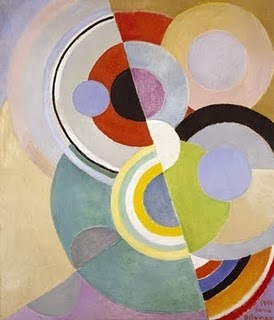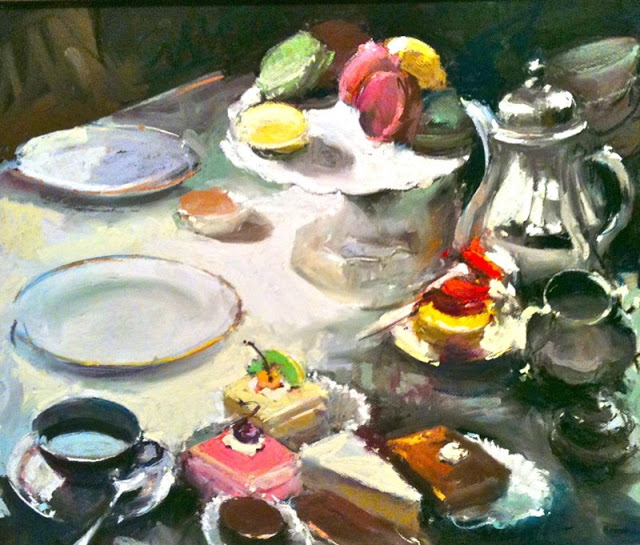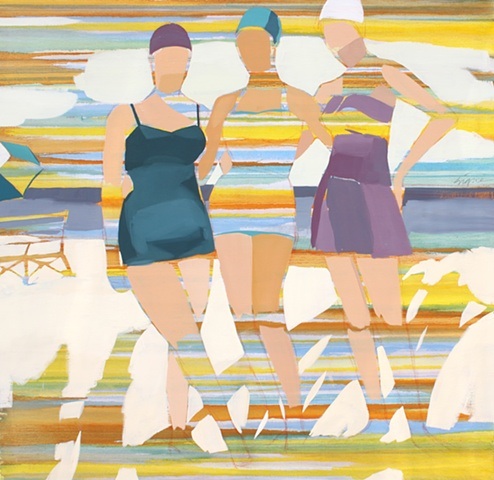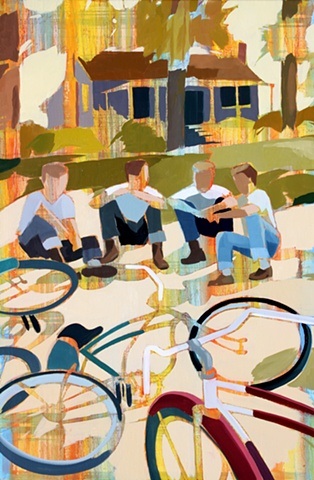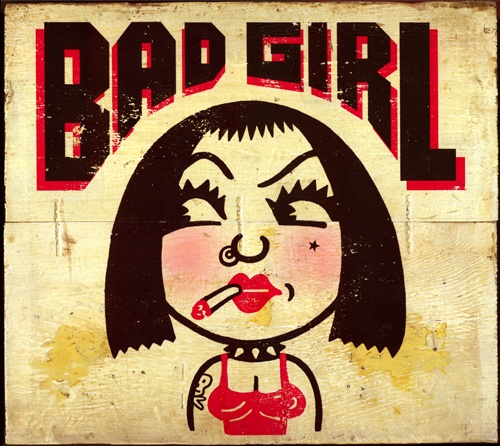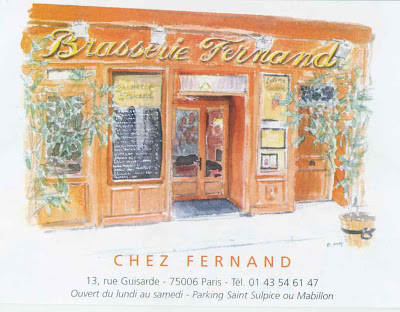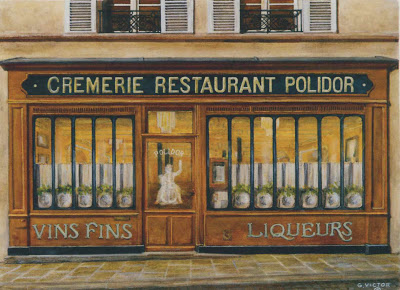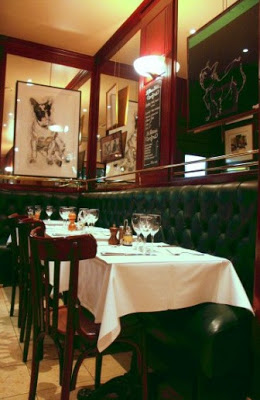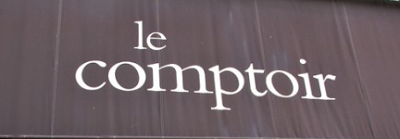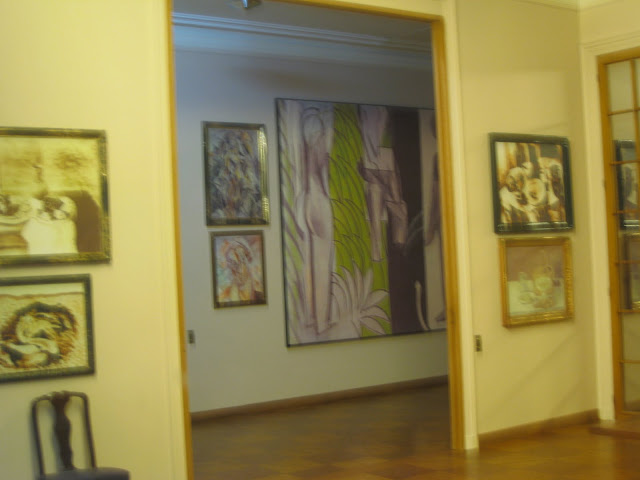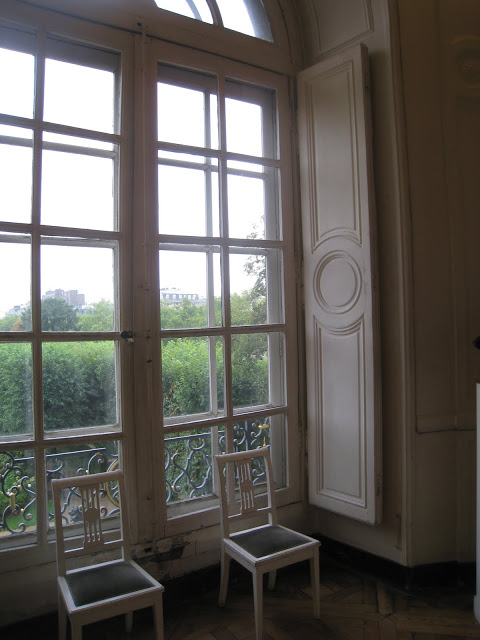I was in Omaha last weekend to attend the Lauritzen Garden Antique Show. I had spoken to a few dealers before I left and all agreed that one of the draws of the show was the remarkable hospitality provided by their hostesses. I was the very grateful recipient of this hospitality, which extended to a wonderful dinner in a private home Friday night.
While we were having a tour of the house I stopped dead in the upstairs hall. Hanging there, nonchalant and elegant, vibrant and graphic, was Sonia Delauney. We’d met, Ms. Delauney and I, at the Cooper-Hewitt last spring and were surprised to bump into one another again in Omaha.
Charlotte Moss was the speaker at that day’s luncheon and she began her talk by noting that all of our experiences are tucked away somewhere and they surface as inspiration and reference points as we move through the world. I’d expected good things in Omaha, but I had not expected to be able to press my nose to the glass of a Sonia Delauney painting. There is wonder everywhere we go.
Image via the Cooper-Hewitt. This was not the painting in the hall, though it was similar. I did not, literally, press my nose to the glass. I swear.

